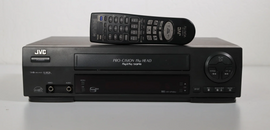
Mold is a type of fungus that thrives in damp, dark, and humid environments. It can grow on a wide range of materials, including paper, which makes it a significant threat to printed photos. Moldy photographs not only lose their aesthetic appeal but also suffer from irreversible damage over time. This article will explore the extent of harm that mold can cause to cherished printed photos and provide essential information on how to prevent, identify, and restore them.
Moldy photos not only look unsightly but can also pose health risks to individuals who come in contact with them. Exposure to mold spores can lead to respiratory problems and allergies, especially in those who are sensitive or have compromised immune systems. Thus, it is crucial to address the issue of mold on photographs as soon as it is noticed, to prevent further damage and health risks.
Understanding the factors that contribute to mold growth on printed photos is essential in preventing their deterioration. In the next section, we will delve deeper into the mechanisms through which mold damages these cherished memories.

Understanding How Mold Damages Photos
Mold damage on photographs is a result of the biological processes that occur as the fungus feeds on the organic components of the paper and ink. Mold spores release enzymes that break down cellulose and other organic materials, resulting in the weakening and eventual disintegration of the photo paper. Additionally, the pigments in the ink can be altered by the mold, causing changes in color and image quality.
The growth of mold on photos can also cause them to stick together or adhere to surfaces, making it difficult to separate them without causing further damage. Moreover, as the mold spreads across the surface of the photo, it can create unsightly stains and marks that mar the image and permanently alter its appearance.
The long-term effects of mold on printed photos can be devastating and irreversible if not addressed promptly. In the next section, we will discuss the consequences of untreated mold on cherished printed photos.
The Long-Term Effects of Mold on Cherished Printed Photos
If mold is allowed to grow unchecked on printed photos, the damage can become extensive and irreversible. Over time, the paper may become brittle and disintegrate, and the ink may fade or change color. In some cases, the mold can even eat away at the image itself, leaving behind a distorted or incomplete memory.
Additionally, moldy photographs can contaminate other photos and materials stored nearby, leading to a more widespread problem. The mold spores can easily spread through the air, attaching themselves to other surfaces and starting new colonies. This can result in the loss or damage of multiple cherished memories if not addressed in a timely manner.
The emotional impact of losing treasured printed photos to mold damage can be significant. These photos often serve as tangible connections to the past and losing them can feel like losing a piece of personal history. In the next section, we will discuss the signs that your photos may be at risk of mold damage or already affected.
Signs That Your Photos May Be Moldy or at Risk
Early detection of mold on printed photos is crucial for preventing extensive damage and potential health risks. Some signs that your photos may be moldy or at risk of mold growth include:
- A musty, earthy smell emanating from your photo storage area.
- Visible mold growth, which can appear as fuzzy or slimy patches of various colors, such as white, green, black, or orange.
- Damp or humid conditions in the storage area, which create a favorable environment for mold growth.
- Warping, discoloration, or other visible signs of damage on the photos themselves.
If you notice any of these signs, it is crucial to take immediate action to prevent further damage and protect your cherished memories. In the next section, we will discuss ways to prevent mold growth on your printed photos.
How to Safely Handle and Store Moldy Photographs
If you discover moldy photographs in your collection, it is essential to handle and store them properly to minimize the risk of further damage and contamination, and to protect yourself from the potential health risks associated with being around mold. Here are some tips for dealing with moldy photos:
- Wear gloves and a mask when handling moldy materials to protect yourself from exposure to mold spores.
- Isolate the affected photos from other materials to prevent the spread of mold.
- Gently remove any loose mold or debris from the surface of the photos using a soft brush or clean cloth.
- Place the moldy photos in individual plastic sleeves or envelopes to contain the mold spores and protect them during the cleaning and restoration process.
Once you have safely handled and stored your moldy photographs, you can explore restoration options to salvage your cherished memories. In the next section, we will discuss various restoration techniques for photos damaged by mold.
Preventing Mold Growth on Your Printed Photos
Preventing mold growth on printed photos involves controlling the environmental factors that contribute to mold development. Here are some steps you can take to reduce the risk of mold growth on your cherished memories:
- Store your photos in a cool, dry, and well-ventilated area, away from direct sunlight and sources of moisture.
- Use acid-free and lignin-free photo storage materials, such as archival-quality boxes, folders, and sleeves, to protect your photos from environmental contaminants.
- Monitor humidity levels in your storage area and use a dehumidifier or moisture-absorbing products to maintain a relative humidity of 30-50%.
- Regularly inspect your photos for signs of mold growth or damage and address any issues promptly.
By taking these preventive measures, you can significantly reduce the likelihood of mold growth on your printed photos and preserve your cherished memories for years to come. In the following section, we will discuss how to handle and store moldy photographs safely.
Proper Storage and Preservation Techniques for Printed Photos
To ensure the long-term preservation of your printed photos, it is essential to follow proper storage techniques. Here are some guidelines for safely storing your cherished memories:
- Use archival-quality storage materials, such as acid-free and lignin-free boxes, folders, and sleeves, to protect your photos from environmental contaminants and damage.
- Store your photos in a cool, dry, and well-ventilated area, away from direct sunlight and sources of moisture, to prevent mold growth and other forms of damage.
- Organize your photos by date, subject, or event, and label them clearly to make it easier to locate specific images and monitor their condition over time.
- Regularly inspect your photos for signs of mold growth or damage and address any issues promptly to prevent further deterioration.
Properly storing and preserving your printed photos is crucial for maintaining their quality and longevity. However, considering digital alternatives can offer an additional layer of protection for your cherished memories. In the next section, we will discuss the benefits of digitizing your printed photos.

Restoration Options for Photos Damaged by Mold
Restoring moldy photographs can be challenging, but there are several techniques and services available to help salvage your cherished memories. Some restoration options include:
- DIY cleaning and restoration: This involves gently brushing away mold and debris from the surface of the photo and using a soft cloth or cotton swab dampened with a mild solution of water and isopropyl alcohol to clean the area. Be sure to work carefully and test a small area of the photo before proceeding to avoid causing further damage.
- Professional photo restoration services: These experts can assess the extent of the mold damage and use specialized techniques and equipment to clean, repair, and restore your photographs. They may also be able to digitally restore the images, depending on the severity of the mold damage.
- Digital restoration: Scanning your moldy photographs and using photo editing software to repair and enhance the images can be an effective way to salvage your cherished memories. This may not always be possible with severely damaged photos, but it is worth considering for those with less extensive mold damage.
Regardless of the restoration method you choose, it is important to store and preserve your photos properly to prevent future mold damage. In the next section, we will discuss proper storage and preservation techniques for printed photos.

Digital Alternatives to Safeguard Your Cherished Memories
In addition to following proper storage and preservation techniques, digitizing your printed photos can provide an extra layer of security for your cherished memories. By scanning your photos and creating digital copies, you can:
- Preserve the images in a format that is less susceptible to environmental damage, such as mold growth.
- Easily create multiple backups of your digital photos, ensuring that your memories are safe even if the original prints are lost or damaged.
- Share your cherished memories with friends and family more easily, while also reducing the risk of damage to the original prints.
- Edit and enhance your digital photos using photo editing software, which can help to restore images that have been affected by mold or other forms of damage.
Digitizing your printed photos can be a valuable addition to your preservation efforts, providing added security and peace of mind for your cherished memories. While you can certainly archive and digitize your photos on your own, there are companies that can help you clean, restore, and digitize your photos and videos, forever preserving their stories.
Moldy photographs can have devastating and long-lasting effects on your cherished printed memories. By understanding the risks, signs, and mechanisms of mold damage, you can take proactive steps to prevent, identify, and restore your photos. Proper storage, preservation, and digitization techniques can help to safeguard your cherished memories from the detrimental effects of mold and ensure their longevity for future generations to enjoy.

